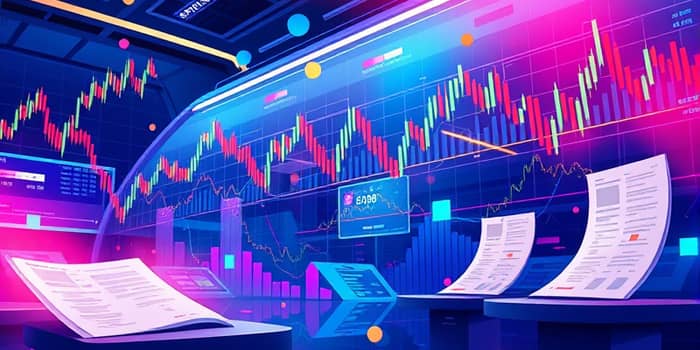
In a world where financial markets move at lightning speed, derivatives stand as powerful tools for hedging risk, speculating on price movements, and unlocking leverage.
From commodities like oil and gold to stock indices and currencies, options and futures allow participants to navigate uncertainty with precision.
A derivative is essentially a securitized contract whose value is dependent on an underlying asset such as equities, bonds, commodities, interest rates, or currencies.
Its worth fluctuates in direct response to the price changes of the underlier, creating opportunities for risk management and speculative gains.
As of June 30, 2024, the global derivatives market boasted a notional value of $729.8 trillion, reflecting its immense scale and significance in modern finance.
Derivatives come in various forms, each serving distinct purposes for traders and institutions.
Options are versatile instruments categorized as calls and puts.
A call option gives the holder the right to buy 100 shares of the underlying stock at the strike price up to expiration, while a put option allows the holder to sell under the same conditions.
Traders use options for two primary objectives: speculation—betting on price movements—and hedging—protecting existing positions against adverse market swings.
The price of an option, known as the premium, is influenced by several factors:
By understanding these variables, an investor can gauge risk and reward potential before entering a position.
Futures contracts are standardized agreements traded on regulated exchanges such as the CME and NYMEX.
They cover a vast array of assets, including commodities like crude oil and agricultural products, financial instruments such as stock indices and government bonds, and even currency pairs.
Each contract specifies details like contract size, tick size (minimum price movement), and the settlement mechanism, which may be physically delivered or cash-settled upon expiration.
One of the defining features of futures is leverage: traders are required to post an initial margin—often just 3–12% of the notional value—enabling them to control large positions with relatively small capital outlays.
However, this leverage amplifies both gains and losses, necessitating robust margin management strategies.
Options on futures blend the characteristics of both derivatives, granting holders the right to enter into a futures position at a predetermined price.
Call options on futures permit going long on the underlying contract, while put options allow going short.
These instruments are valued using adaptations of the Black-Scholes model—commonly the Black model—to account for the futures’ forward pricing dynamics.
Options on futures often expire more frequently than the futures contracts themselves, providing traders with incremental hedging and speculative opportunities, particularly in commodity and volatility markets.
This comparison highlights the trade-offs between the limited risk profile of options and the straightforward leverage of futures.
Despite their utility, derivatives carry inherent risks that can magnify losses:
Leverage risk can lead to rapid depletion of capital when markets move against positions, especially in futures markets.
Counterparty risk arises predominantly in over-the-counter transactions, where the failure of one party can trigger significant losses.
Volatility risk stems from sudden market events or supply-demand shocks, causing sharp price swings that challenge risk models.
Systemic risk is another concern, as widespread derivative use can interlink financial institutions, potentially propagating crises across markets.
The derivatives ecosystem comprises major exchanges like the CME, NYMEX, and COMEX, alongside over-the-counter venues.
Participants range from commercial hedgers—such as producers, consumers, and asset managers—to speculators and arbitrageurs seeking profit opportunities.
In recent years, retail participation has surged, bolstered by electronic trading platforms and educational resources.
Before engaging in derivatives trading, individuals must become familiar with contract specifications, including tick sizes, expiration cycles, and settlement methods.
Most commodity and financial futures can result in physical delivery if positions are held into expiration, but many traders opt to close positions beforehand to avoid logistical challenges.
Implementing strict risk management protocols—such as stop-loss orders, position sizing rules, and margin monitoring—is crucial to safeguard capital in volatile markets.
The derivatives landscape continues to evolve, with new asset classes emerging such as cryptocurrency futures and weather-linked contracts.
Technological innovations, including high-frequency trading algorithms and blockchain-based clearing solutions, are reshaping market dynamics.
Complex strategies—such as multi-leg spreads, volatility arbitrage, and algorithmic execution—are now accessible to a broader audience, highlighting the importance of ongoing education and due diligence.
Derivatives trading offers a versatile toolkit for risk management, speculative opportunities, and portfolio diversification.
By comprehending the mechanics of options, futures, and their hybrid instruments, market participants can craft strategies that align with their objectives and risk tolerance.
Whether hedging corporate exposures or seeking alpha through volatility, the world of derivatives demands discipline, knowledge, and respect for its transformative potential.
thorough preparation and prudent risk controls enable traders to harness these instruments responsibly.
References













